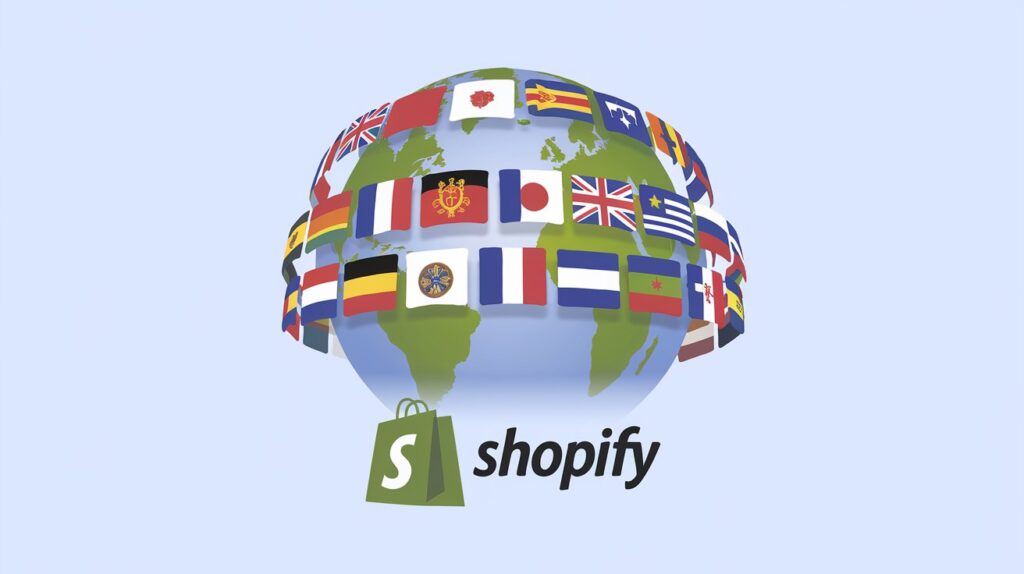Key Highlights
Understanding the Global Market for E-Commerce
In business development, international e-commerce is an issue that needs addressing when businesses want to grow. In 2023, global e-commerce revenue, in an optimistic view, is expected to reach 2.4 billion, which is indicative of the leaping chances for businesses willing to venture outside their home markets. Among the key factors facilitating this growth are increased internet uptake, the advent of mobile commerce, and people becoming increasingly used to shopping online in different areas of the globe. However, refund policies, legal constraints, and differences in behavioural patterns must also be understood due to the diversity of such markets. A systematic strategy, from identifying prospects to conducting market research, including demographic study and industry analysis, is very appropriate. This basic comprehension will help make strategic decisions in the marketing mix, from traditional marketing to developing localization strategies.
Why Choose Shopify for Global Brand Building?
Shopify has become the darling of many entrepreneurs seeking to expand their business brands to the global space, given its vast array of tools, enhancing the ease of cross-border trade. In terms of strengths, one opportunity that suits every Shopify business is the growth option, thanks to its scalability features. Of equal importance, Shopify has many international features, such as multi-currency, localization of payments, and global shipping solutions. Integration with third-party services and further modification due to the availability of rich API and a wide range of applications built on this platform is also essential in addressing geographical concerns. All adopting brands have the ability, through Shopify, to maintain brand consistency and user experience across all geographies and at any given time, which is critical in winning over foreign markets.
Setting Up a Shopify Store for International Audiences
Creating an online Shopify store for viewers in different regions requires harnessing more than just content translation alone. Care must be taken to ensure that your store is welcoming and helpful to customers worldwide. To begin with, choose a theme that supports multiple languages and ensure that the overall tone of your store design is appealing to the international market. Localizing the payment methods and tax and shipping rate calculations are essential for smooth checkout. In addition, appropriate planning for the SEO considerations of the multi-regional sites should be undertaken through the hreflang tags to avoid miscommunication by search engines on the targeting geography and languages of the site. Compliance with various legal fantasies like the GDPR in Europe is also essential because it builds customer confidence and ensures that the store remains within legal constraints. Careful organization of these elements will make your Shopify store internationally market-oriented.
Optimizing Your Shopify Store for Multiple Languages
Expanding the Shopify store to other languages is paramount to getting an audience in all corners of the world. This entails merely converting words and modifying the content to fit the region. Apply the built-in tools of the Shopify platform or third-party applications, for example, magnify, to speed up the translation procedures and ensure that everything in the store, including the product descriptions and the checkout instructions, is in the users’ language. Furthermore, multilingual websites are now more attractive in terms of enhancing the site’s search engine optimization strategies. For better performance in search engine result pages in targeted countries, name the URL versions by the language they have been translated. This technique allows the search engines to serve the appropriate content to the users based on their language preferences, enhancing the user experience and increasing the site’s organic reach in different markets.
Navigating International Shipping and Logistics with Shopify
Dealing with international shipping and other logistics is, to most successful businesses, the most challenging element to deal with while going global, but this is where Shopify has several tools to ease these issues. In particular, Shopify Shipping offers customers a wide range of shipping options at affordable prices while working with famous couriers. This tool also permits one to use a shipping label print and restricts the customer from charging the payment for shipping at the current applicable rates, which mitigates incidences when customers abandon the purchase when consumer goods costs are washed out by shipping expenses during checkout. Equal importance should be considered when engaging with fulfilment services such as the Shopify Fulfillment Network or external logistics companies that keep stock and deliver products directly to customers globally. This reduces the time it takes to deliver goods to customers and minimizes the costs of sending goods overseas, making the items attractive to customers in foreign markets. Surveillance of the targeted market customs and duties cannot go without saying, as it will uphold no delays or refusals of the intended packages at the borders dealing with such shipments.
Leveraging Shopify Apps for Global Expansion

Merchants focusing on global expansion turn to the app’s powerful’ arsenal provided by Shopify. For example, applications such as Plug-in SEO allow the store to be optimized for different search engines in various countries. Marketing activities can be carried out with the help of Kit to promote this company internationally, among other applications. For customer service, consider using apps like Re or Gorgias to offer multilingual support and integrate with local social media platforms. In addition to these applications, inventory control applications like Stocky can help localize stock levels across various sites to prevent excess inventory or stockouts. If you are making strategic decisions on which apps to integrate into your Shopify store, expect to fully automate your business’s marketing and customer support functionalities, which means that your business will scale in efficiency as your sales grow.
SEO Strategies for International Markets on Shopify
SEO Strategies for International Markets on Shopify SEO strategies targeting foreigners are not simply about finding equivalents for keywords. Begin first with local keyword research to know what the potential customers are searching for in various places. SEO optimization has to analyze the search volume trends for different countries and customize the campaigning to the target market’s language. Use structured data while creating the local listing; Shopify has local SEO strategies, including getting backlinks from local sites and getting listed in local directories. Further, the store should be mobile responsive as most foreign markets go online through the phone. Local SEO increases the chances of visibility and relevance; hence, traffic that may be converting is improved.
Marketing Your Shopify Store to a Global Audience
In addition to selecting target markets for Shopify store sales, it is crucial to consider how to market your Shopify store to an audience in these regions. Region-focused advertising can also promote your store. Use social media networks popular in the respective territories, like WeChat in China or VKontakte in Russia, to help create visibility for your business. Make local content, use local events or trends, and even problems your international clients might face. Using local Influencers will improve authority and increase reach. There is also the option of international PPC marketing, which should be used when entering new markets, and the budget for ads should be allocated based on regional effectiveness. It is also essential to ensure that email marketing campaigns are broken down into local segments, considering the local time and cultural setting when communicating thoughts, ideas, and announcements.
Managing Currency and Payment Options for Global Customers
You must include different currencies and payment options in your Shopify store to appeal to customers worldwide. Shopify payments help these companies accept more than one currency and let customers shop and checkout in their most favourable currency. This feature can improve the user’s overall satisfaction and minimize the incidence of customers abandoning their carts due to the need to convert the currency. Apart from that, add local payment methods that are popular in the regions you want to target. For instance, you can use the iDEAL payment system in the Netherlands, Alipay in China and Boleto in Brazil, which will help increase the conversion rate by supporting local tastes. Learning these payment options and offering them at the point of selling makes life easier for the consumers and gives you more sales since you meet more consumer needs.
Case Studies: Successful Global Brands on Shopify
Considering the case studies of successful brands deployed on Shopify, it is possible to gain some practical lessons that assist one in their quest to go global. Gymshark, Allbirds, and other brands have already taken advantage of the cross-border potential provided by the Shopify platform. In the case of Gymshark, it strengthened local content and involved global fitness communities, whereas in Allbirds, it was a sustainability that they marketed everywhere. These brands have also improved their international logistics and customer service cooperation to satisfy international markets. People evaluating these brands comprehend that success in global business requires the branding of ideas and the ability to morph the theories to fit the region’s marketing strategy. Knowing what these brands have done right makes it easy to formulate methods to improve a brand and position it above the competition.
Common Challenges and How to Overcome Them in Global Branding
Developing a global brand using Shopify as a platform is not all roses – cultural pitfalls and logistical and operational compliance issues abound. A country’s culture affects how well the advertisements and the products will do when launched. To avoid this, engage in extensive market research or employ or consult with people familiar with the cultural context. Further, it is essential to deal with logistical issues when it is necessary to ship and bring back items sold to overseas clients. Last but not least, several regulatory problems need to be addressed, especially regarding legal compliance, such as GDPR, which pertains to data protection or consumer protection legislation. These challenges must be addressed through strategic communication, localized activities, and proactive responses to information and market changes.
Future Trends in E-Commerce: Scaling Your Shopify Store Globally
Undoubtedly, the future of e-commerce developments in technology and the modern consumer will play a significant role. In this regard, as you prepare for the global growth of your Shopify store, identifying new trends, including fast-growing areas such as artificial intelligence, augmented reality, or blockchain technologies, can lead to great competitiveness. For example, AI can almost perfectly tailor the shopping experience for every consumer, AR can make the online shopping experience more interactive by allowing people to see how the actual product looks at them in their house, and blockchain would completely change the level of trust in the supply chain processes. Other trends, such as the emergence of mobile commerce and internet shopping through social media, are some global strategies that target more youthful and tech-savvy markets. Implementing these technologies again helps improve operations, but this time from the point of view of strengthening customer engagement and security measures in e-commerce.
